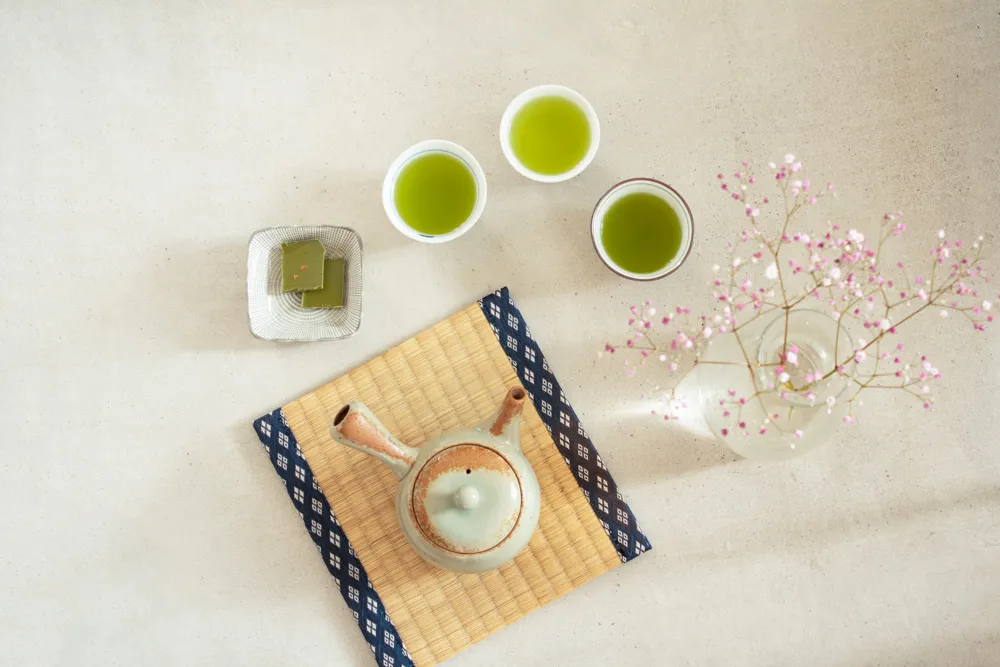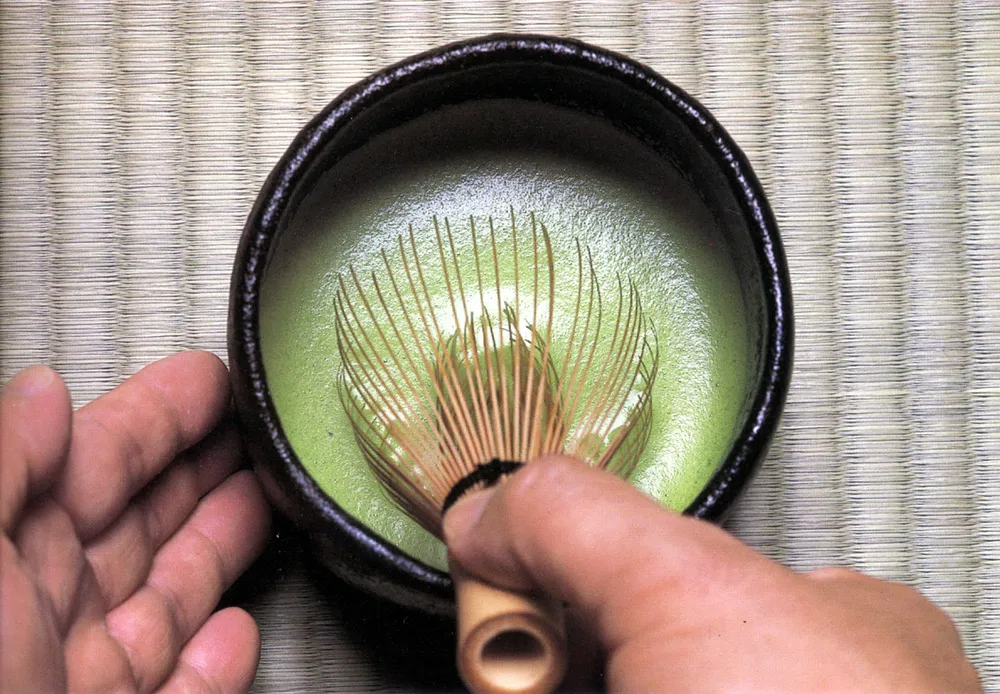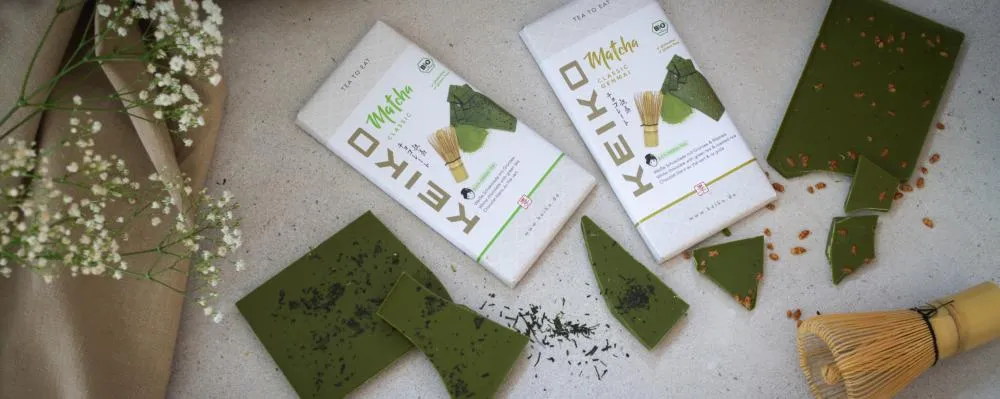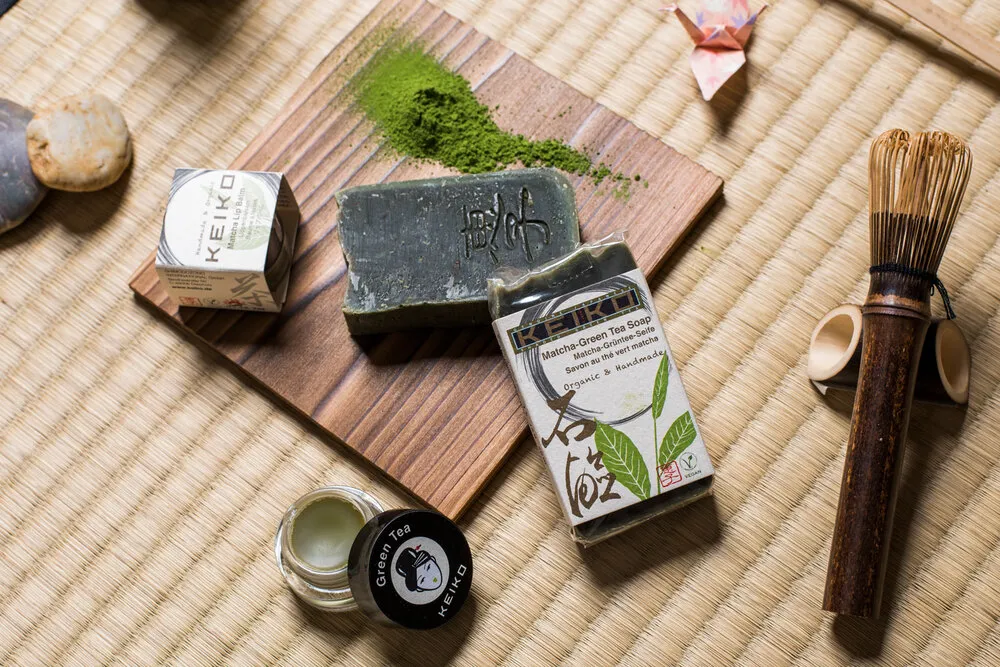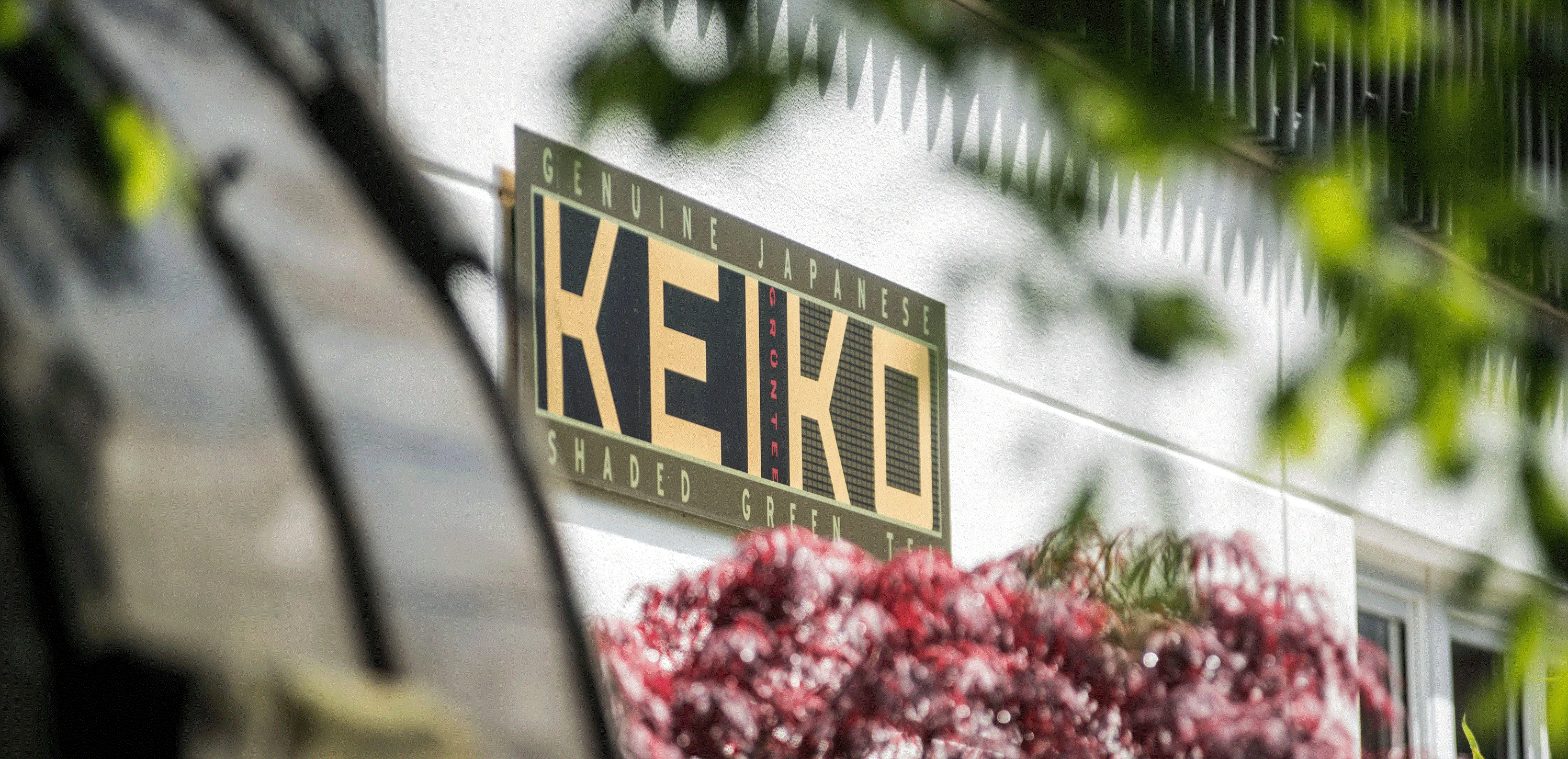Tea Cultivation
No chemical pesticides or fertilisers are used in organic farming, which makes it all the more important to work in harmony with nature.
The natural growing environment in combination with a subtropical climate and nutrient-rich soils provides
optimal conditions for the cultivation of high-quality tea varieties.
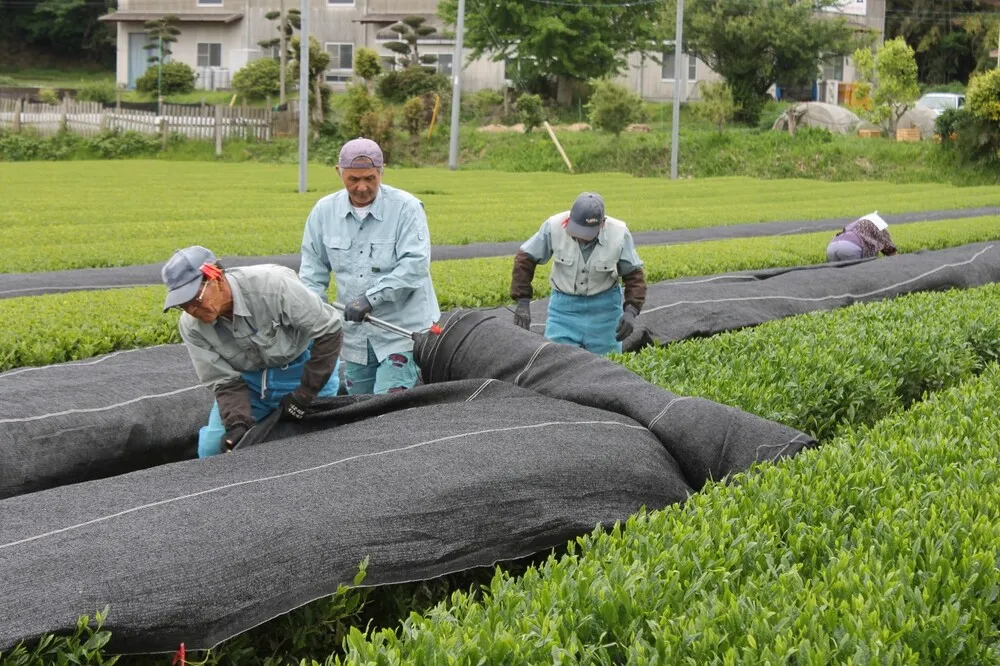
Shading the Tea Plants
The wild tea plant thrives best under Trees – in the half-shade. To imitate these conditions as closely as possible the plants on the Shimodozono Biofarm are shaded with nets, which let only about 50% of the light penetrate.
This leads to a higher concentration of chlorophyll in the leaf, which is easily recognizable when comparing the dark green shaded tea leaves to the lighter, yellowish unshaded leaves. The plants also develop a lower content of tannins, which gives the infusion of the tea its characteristic fresh taste with a hint of sweetness.
No chemical pesticides or fertilisers are used in organic farming, which makes it all the more important to work in harmony with nature.
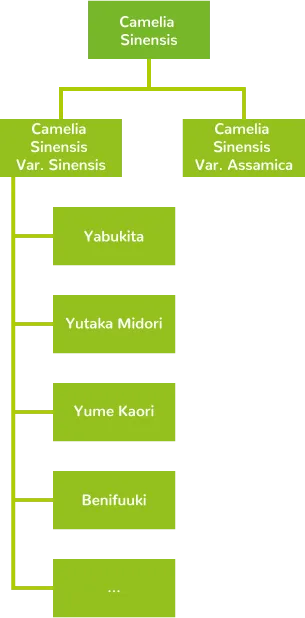
Resilience through diversity
Organic cultivation does not make use of pesticides or chemical fertilizer. This makes it all the more important to be in harmony with nature. A large amount of varieties protects the tea garden from disease infestation making use of the varying properties of each variety. Plant diversity is also essential for pollinating insects.
Most green teas on the market are not pure varieties. This means that they are put together from different cultivars in order to achieve the desired flavour.
(Learn more: Green Tea Production)
The cultivar Yutaka Midori (meaning: rich green) is the
main component of many KEIKO teas and gives them a particularly beautiful
colour and a deep green fragrance.
In addition to such blends, the KEIKO range also includes single variety teas such as Shincha Yakushima or Benifuuki. Quality and flavour can vary from harvest to harvest.
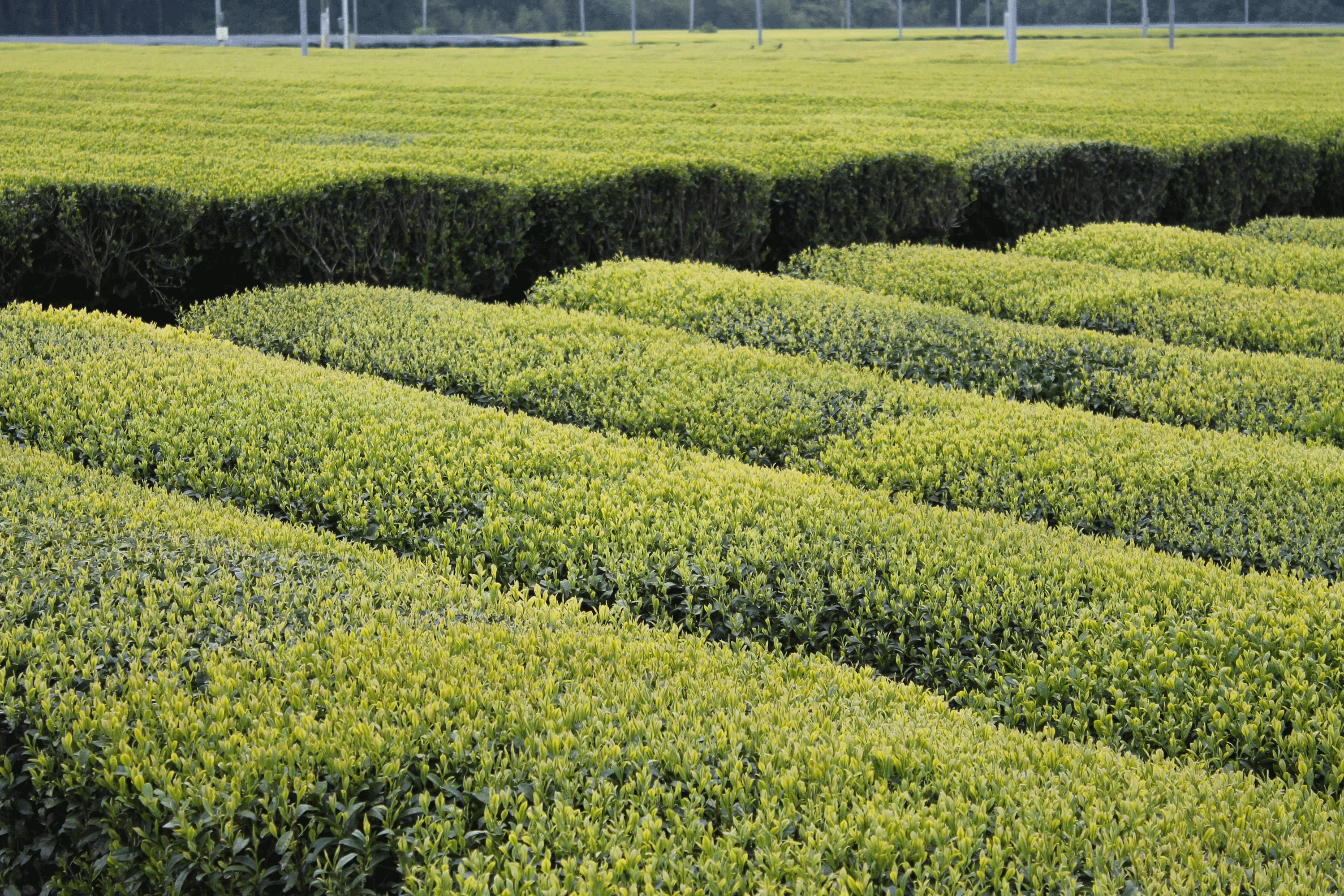
Zairai Mixed crop
A good example for diversity in organic cultivation is Zairai. A cultivation-method in which a combination of different tea-varieties are mixed and grown on one field. In the picture you can see rows of Zairai tea on the Shimodozono Biofarm – the irregular color and structure gives away the mix of different varieties. (See picture above, from the KEIKO organic farm.)
The harvest
The Shimodozono Biofarm offers perfect conditions for the cultivation of tea, so the plants can be harvested several times per year. Depending on the time of picking the aroma and the ingredients contained in the leaves also vary.
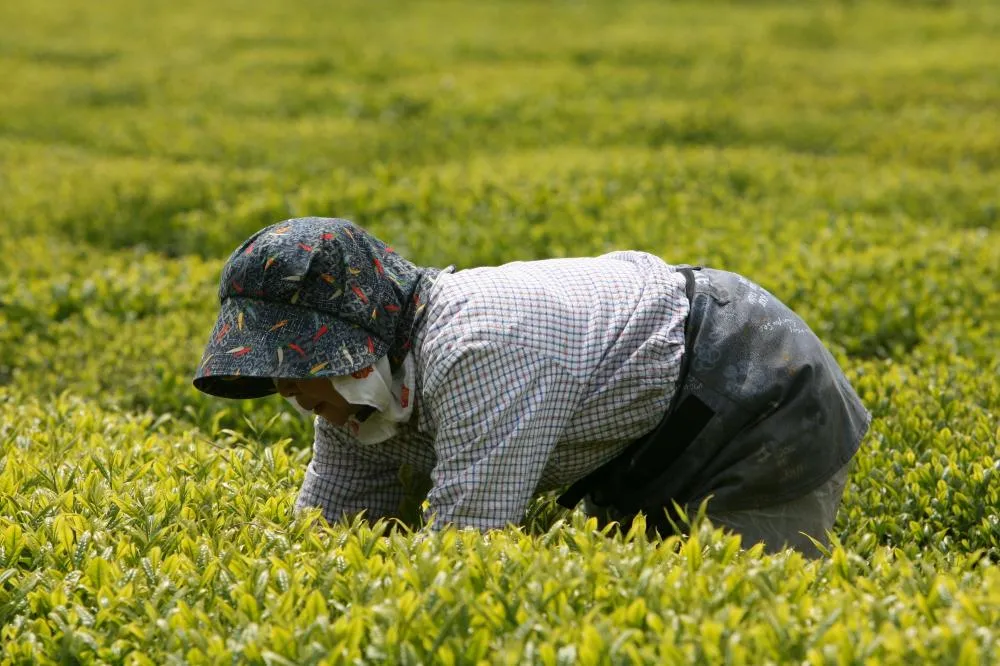
In the first months of the year, when the temperatures are still quite cool the plants grow only slowly, making the first early picking of the year in April especially aromatic. They usually have a sweet and especially refreshing characteristic which stems from the high theanine content.
Also the Vitamin C content is highest in the earliest pickings, while the caffeine level will rise a bit more towards the second picking after which it drops significantly. Tea from the first picking has a higher yield and can be infused up to 5 times.
The first and second main-pickings take place between mid may and late June. In these pickings the harvest amounts and the leaves themselves are larger in comparison to the early picking, which makes the infusion taste a bit tarter.
In October it’s time for the final autumn-harvest for Akibancha and Akibenifuuki, before the Biofarm rests up over the winter.
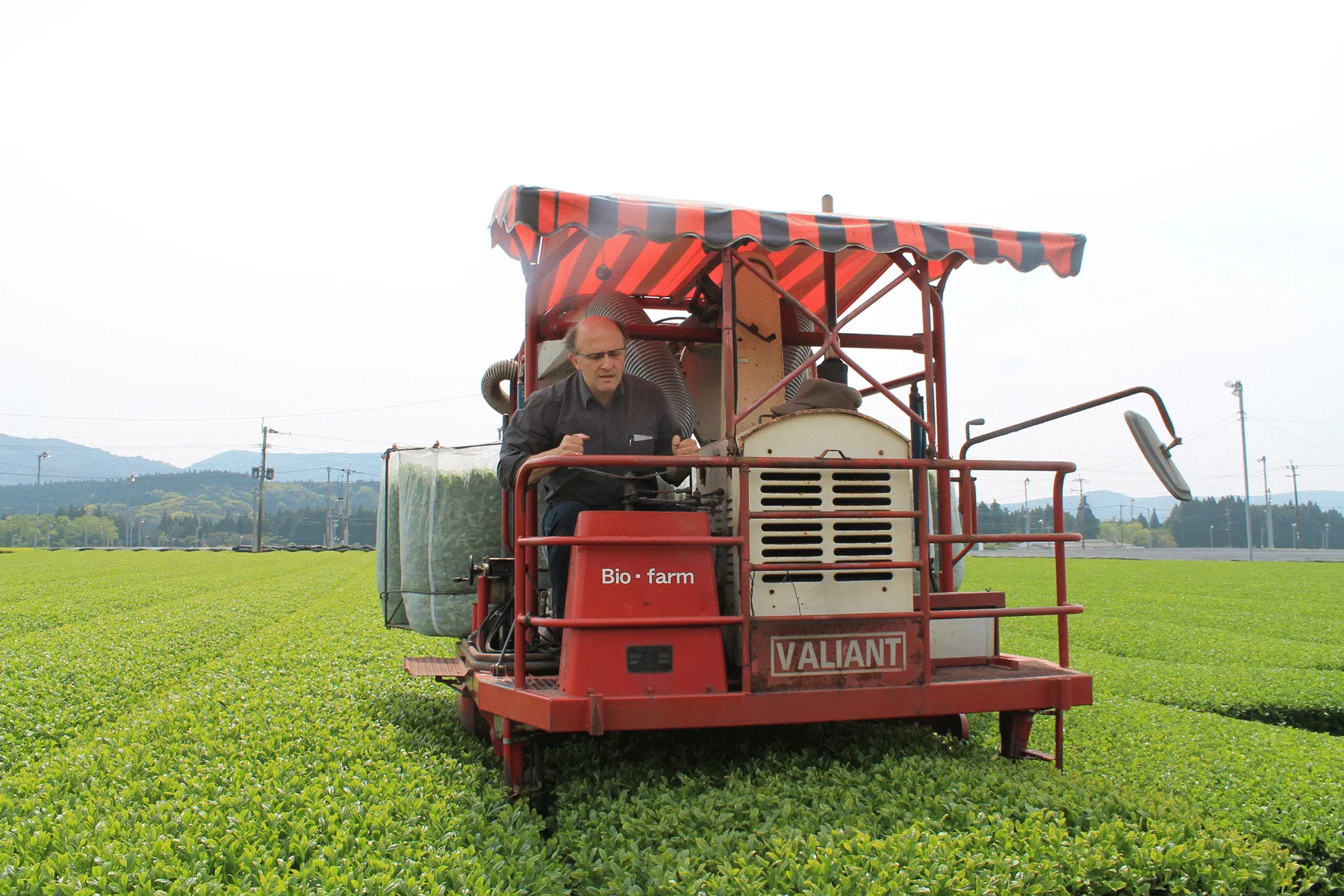
For the harvest we use mostly the harvesting machines pictured. The rotor-blades can be adjusted very accurately for each individual plant and harvest, so only the best leaves at the top can be harvested.
Thanks to the machines the tea can be taken to the initial processing located next to the field in a matter of minutes. This is important to avoid an unwanted fermentation of the leaves in order to produce a really fresh green tea.

